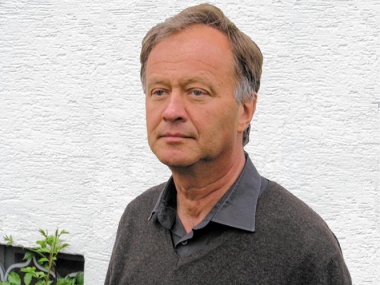
Terra Arte 2012 - Scorcio

Terra Arte 2009 - Mauro Pagani

Terra Arte 2002 - Luca Pugliese - L'arcangelo Michele

InstantMuseum Mefite - Foto 27

Terra Arte 2009 - Luca Pugliese - Alla ricerca del...

Terra Arte 2008 - Luca Pugliese - Armonia discendente

Terra Arte 2012 - Luca Pugliese e Tony Bowers

InstantMuseum Mefite - Foto 09

Terra Arte 2001 - Eugenio Bennato

Terra Arte 2011 - Convegno, Fortunato D'Amico

Terra Arte 2011 - Fluido Ligneo

Terra Arte 2010 - Luca Pugliese, Cosmo Sonoro


|
Arti Visive / Andreas Legath

It was relatively late in the history of Western art that landscape became an autonomous and seriously regarded subject for representation: landscape not as a more veduta but as a metapher and projection of emotion, as an abstract expression of the sublime, as form. Genre and historical painting, portraiture, allegorical and symbolic art had all restricted landscape in paintings to detail and background. It was only in the wake of Claude Lorraines Classical landscapes, in which the mythological or Biblical action is swallowed up in the midst of Nature, that the landscape, and the Italian landscape in particular, became a theme in its own right up to Peiffer - Watenphul, Purrmann or Gilles, the passion that German painters felt for the South - Goethe`s land where the lemon-trees flower - found its expression in countless pictures.
The landscape of Italy was extolled not simply for its harmony, but because every bit of it is Nature that has been cultivated, worked, and manicured: because it is Nature become Culture. For Legath it is not so much the wide open landscape with its cypresses, its villa-crowned hills and the eternal blue sky that ist attractive, but rather the austerity of the Crete Senese or the harsh landscape of Sardinia with its scorch-marks.
His landscapes - rapidly sketched out on site, then transferred and developed later in the studio, slowly taking shape on grounded canvases, are closer to the karst landscapes of Istria, or those of Friuli with which Zoran Music`s paintings have made us familiar. They are related to the monochrome landscapes of Giorgio Morandi, to those of the Spanish painter, Hernandez Pijuan - and those of Agnes Martin, who studies the light and the structural forms of the Mexican desert.
Legath is interested in the structures and other traces which people left behind in Nature. What the harvested fields of Catalonia meant for Pijuan, their structures and the undulating patterns of the corn and reddish brown as the dominant experience of a lergely monochrome landscape, and what the desert`s light and linear elements meant for Martin, Legath finds in landscape features of human origin, the serial scorch markings, fields and terracings, and also in the shifting relationship of earth and sky, an age-old theme of landscape painters. The earth has an overall brown hue in which grey always asserts itself; his skies are wan, and know nothing of the radiant blue. Legath`s pictures tend towards the monochrome.
Nature, tangible landscape, is the starting-point for his adventure in colour. The artist introduces an additional formal medium by blending fine sand into his paint mass, a procedure that helps to lend relief to the painting and even results in reflections of light of the minute crystals in the sand. It might be argued - almost tautologically - that a picture that tells of sand is born of sand. For Morandi, landscape and still life both had something of the latter`s quality of deadness. Legath`s pictures emerge from actual experiences. What results from this experience - and here an important factor is the distancing from a painting`s original subject - is a wholly individual, unmistakeable pictorial language which represents a major contribution to landscape painting today.
Peter Weiermair
Tags :
Instant Museum 2015
Links :
www.legath.com
|













